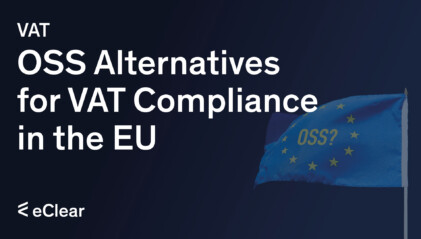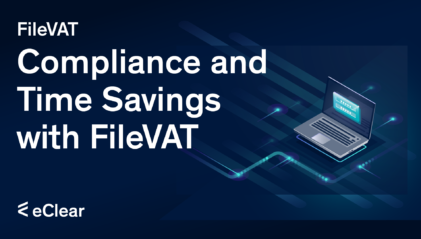Navigating the VAT system in Ireland can be daunting, especially for online merchants who deal with customers and suppliers from different countries. In this in-depth guide, we’ll walk you through everything you need to know about VAT in Ireland, including its history, VAT rates, exemptions, registration, and compliance. We’ll also delve into regional peculiarities and provide a detailed overview of B2B and B2C deliveries of goods and services.
The Value-added tax was first introduced in Ireland on November 1st, 1972, as a comprehensive replacement for the less efficient turnover tax that was previously in place.
The implementation of VAT was a crucial step in Ireland’s economic integration, coinciding with the country’s accession to the European Economic Community (EEC), which later transformed into the European Union.
Over the years, the Irish VAT system has undergone a series of modifications and refinements to adapt to the changing economic landscape. These alterations have included adjustments to VAT rates, the introduction of new exemptions, and revisions to existing ones, to better serve the Irish economy and its taxpayers.

VAT Rates
In Ireland, there are four primary Value Added Tax (VAT) rates that are applied to various goods and services, each with its own specific application. For an exhaustive list of goods and services subject to different VAT rates, visit the Irish Revenue’s website here.
Standard rate: 23%
This rate is applicable to the majority of goods and services available in the country. This encompasses a wide range of products and services, from household items to professional services.
Reduced rate: 13.5%
This rate is designed for specific goods and services, such as fuel, select building services, and particular tourism-related activities.
Second reduced rate: 9%
This rate targets certain goods and services, including newspapers, electronic publications, and sporting facilities.
Zero rate: 0%
This rate is applied to essential goods and services, such as food, children’s clothing, and books.
VAT Exemptions
In Ireland, there are specific goods and services that are exempt from Value Added Tax (VAT), which comprise a range of important sectors. Some of these exemptions include:
Medical services rendered by qualified practitioners, encompassing a variety of healthcare professionals such as doctors, dentists, nurses, and physiotherapists.
Educational services furnished by recognized institutions, including primary, secondary, and higher education establishments. These institutions may be public or private, but must adhere to the guidelines and regulations set by the appropriate governing bodies.
Financial and insurance services, covering a wide array of products and services offered by banks, credit unions, insurance companies, and other financial institutions. This exemption encompasses services such as lending, deposits, investment management, and various types of insurance policies.
For a complete list of VAT exemptions, refer to the Irish Revenue’s VAT exemption guidelines here.
VAT Registration
Companies conducting business in Ireland, encompassing both physical and online merchants, are mandated to register for VAT if they surpass certain turnover thresholds.
A turnover of €37,500 applies to businesses engaged in providing services such as consulting, legal assistance, and other professional services.
A turnover of €75,000 is applicable for companies involved in the supply of goods, which includes the sale of tangible products like electronics, clothing, and furniture.
It is important to note that non-established businesses, which are enterprises without a fixed establishment in Ireland but still supply goods or services within the country, may also be required to register for VAT. This registration obligation applies irrespective of their turnover, ensuring compliance with Irish tax regulations and proper collection of VAT on goods and services supplied to consumers within Ireland.
You can find detailed information about VAT registration for non-established businesses here.
VAT Compliance
Online merchants operating in Ireland are required to adhere to a set of specific Irish VAT regulations, which include the following key elements:
Charging the appropriate VAT rate on goods and services: This entails applying the correct VAT percentage (either standard, reduced, or zero-rated) to the products and services they offer, as determined by Irish tax legislation.
Issuing VAT-compliant invoices: Merchants must provide customers with VAT invoices that contain essential information such as the VAT registration number, the specific VAT rate applied to each item, and a clear breakdown of the VAT amounts charged.
Maintaining accurate VAT records and retaining them for an extended period: Online merchants are obligated to keep precise and up-to-date VAT records for all their transactions. These records must be stored for a minimum of six years to ensure compliance with Irish Revenue regulations and facilitate potential audits.
Submitting VAT returns electronically with the appropriate frequency: Depending on the business’s annual turnover, online merchants must file their VAT returns either bi-monthly or quarterly. These returns must be submitted electronically through the Irish Revenue’s Online Service (ROS), providing a comprehensive account of VAT-related transactions during the reporting period.
Timely payment of VAT liabilities: Online merchants are responsible for remitting any VAT due to the Irish Revenue within the stipulated deadlines. Failure to pay VAT on time may result in penalties, interest charges, and potential legal repercussions. It is essential to be aware of the payment deadlines and adhere to them diligently to avoid any complications with the tax authorities.
Registering for VAT: Online merchants who exceed the VAT registration threshold or anticipate surpassing it must register for VAT with the Irish Revenue. This process involves providing necessary business information and documents to obtain a VAT registration number, which is essential for compliance and communication with the tax authorities.
Keeping abreast of changes in VAT legislation: The Irish VAT landscape is subject to periodic changes, including adjustments to tax rates and compliance requirements. Online merchants must stay informed about these changes and implement them in their business practices to ensure ongoing compliance.
Applying for VAT refunds, if applicable: In certain cases, online merchants may be eligible for VAT refunds on specific expenses or purchases made for their business. It is essential to understand the eligibility criteria and apply for refunds within the stipulated timeframes to avoid missing out on potential savings.
For more information on VAT compliance and deadlines, visit the Irish Revenue’s VAT compliance page.
Input Tax Refund
Claiming Input Tax Refund
To claim an input tax refund, Irish online sellers must submit a VAT return, typically every two months. The VAT return can be completed and filed electronically through the Revenue Online Service (ROS), which streamlines the process for businesses. Detailed information on how to complete a VAT return is available on the Irish Revenue Commissioners’ website.
Conditions for Input Tax Refund
There are certain conditions that must be met to be eligible for an input tax refund. According to the Irish Revenue Commissioners, online sellers must:
- Be registered for VAT in Ireland.
- Use the goods and services on which the input tax was paid to make taxable supplies (i.e., goods and services subject to VAT).
- Retain valid VAT invoices as evidence of input tax paid.
Partial Exemption and Capital Goods Scheme
In some cases, businesses may be partially exempt, meaning they make both taxable and exempt supplies. These businesses can only recover input tax on goods and services used for making taxable supplies. The Irish Revenue Commissioners provide guidelines on calculating deductible input tax for partially exempt businesses.
For capital goods, such as immovable property or computer equipment, the Capital Goods Scheme (CGS) may apply. This scheme allows businesses to adjust the input tax deduction on capital goods over a specified period. Detailed information on the CGS can be found on the Irish Revenue Commissioners’ website.
Regional Peculiarities
It is crucial to highlight that the VAT system in Ireland does not maintain a consistent structure across the entire island. Northern Ireland, as a constituent part of the United Kingdom, adheres to its own distinct VAT rates and regulations.
Deliveries of Goods and Services
B2B
For B2B transactions in Ireland, the general rule for VAT, as outlined by the Irish Revenue Commissioners, dictates that the place of supply is where the customer is established. Consequently:
• For goods, the seller typically charges the VAT rate applicable in the customer’s country.
• For services, the reverse-charge mechanism comes into play, meaning the customer is responsible for accounting for the VAT as described by the Irish Revenue Commissioners.
B2C
In B2C transactions, the place of supply is usually where the supplier is established, as explained by the Irish Revenue Commissioners. This results in:
• For goods, the seller charging the VAT rate applicable in their country.
• For services, the seller applying the VAT rate applicable in their country, unless specific rules apply, such as for electronically supplied services, which are subject to the VAT rate in the customer’s country.
If an online merchant’s sales to customers in another EU country surpass the distance selling threshold of that country, the merchant must register for VAT in that country and charge the local VAT rate. Distance selling thresholds vary between EU countries. For comprehensive information on distance selling thresholds, consult this European Commission page.






